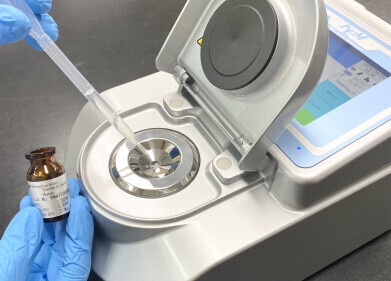Laboratory Products
Why is There a Pipette Tip Shortage?
May 25 2021
Scientific research is heavily dependent on specialised equipment and when the supply chain is compromised the results can be alarming. In the wake of the COVID-19 pandemic the scientific research sector is experiencing major delays in acquiring disposable plastic pipette tips, small but important pieces of equipment used to transport small quantities of liquid. The tips attach to a more sophisticated micropipette apparatus, which can be set to aspirate a pre-set amount of liquid in the microlitre range.
COVID-19 testing fuels shortage
Widespread COVID-19 testing has fuelled the shortage, with the average test requiring four pipette tips. With the US carrying out roughly 1 million tests per day, demand for pipette tips is enormous. It’s not just epidemiologists who rely on pipette tips, with the plastic nibs also used in genetics research, diagnostic screenings, bioengineering and other applications. Even when scientists are not handling highly infectious materials, pipette tips are usually replaced for each sample to avoid contamination.
The pandemic has also impacted distribution, with most supply ships now required to quarantine when arriving at a port. In some cases, container ships have been forced to wait offshore for two weeks before docking. This slows the unloading process and causes further interruptions to the supply chain. Pandemic-related precautions such as social distancing also delay the customs process and increase time in transit.
Severe weather disrupts supply chain
As well as a surge in demand, several other factors have overlapped and contributed to the shortage. In February, wild weather caused major power outages in Texas which shut down polypropylene resin manufacturing plants. The thermoplastic polymer is used to manufacture plastic pipette tips, which meant the severe weather caused significant and ongoing supply shortages.
Scientists forced to improvise
In response to the pipette tip shortage, scientists have been forced to improvise and come up with their own solutions. This includes sterilising and re-using pipette tips, which isn’t ideal but does extend the life of the disposable laboratory tools. Rationing pipette tips has also become routine, with collaboration between colleagues also encourage in a bid to reduce usage.
Whether researchers have access to a good supply of pipette tips or have resorted to recycling the tools, adhering to best-practice methods and techniques is essential.
Lee Moir, a representative from Britain’s internationally recognised MRC Harwell Institute underscores the importance of ergonomics, pre rinsing and maintenance in ‘The Art of Pipetting - Top Tips’.
Digital Edition
Lab Asia 31.2 April 2024
April 2024
In This Edition Chromatography Articles - Approaches to troubleshooting an SPE method for the analysis of oligonucleotides (pt i) - High-precision liquid flow processes demand full fluidic c...
View all digital editions
Events
Apr 28 2024 Montreal, Quebec, Canada
May 05 2024 Seville, Spain
InformEx Zone at CPhl North America
May 07 2024 Pennsylvania, PA, USA
May 14 2024 Oklahoma City, OK, USA
May 15 2024 Birmingham, UK






.jpg)











